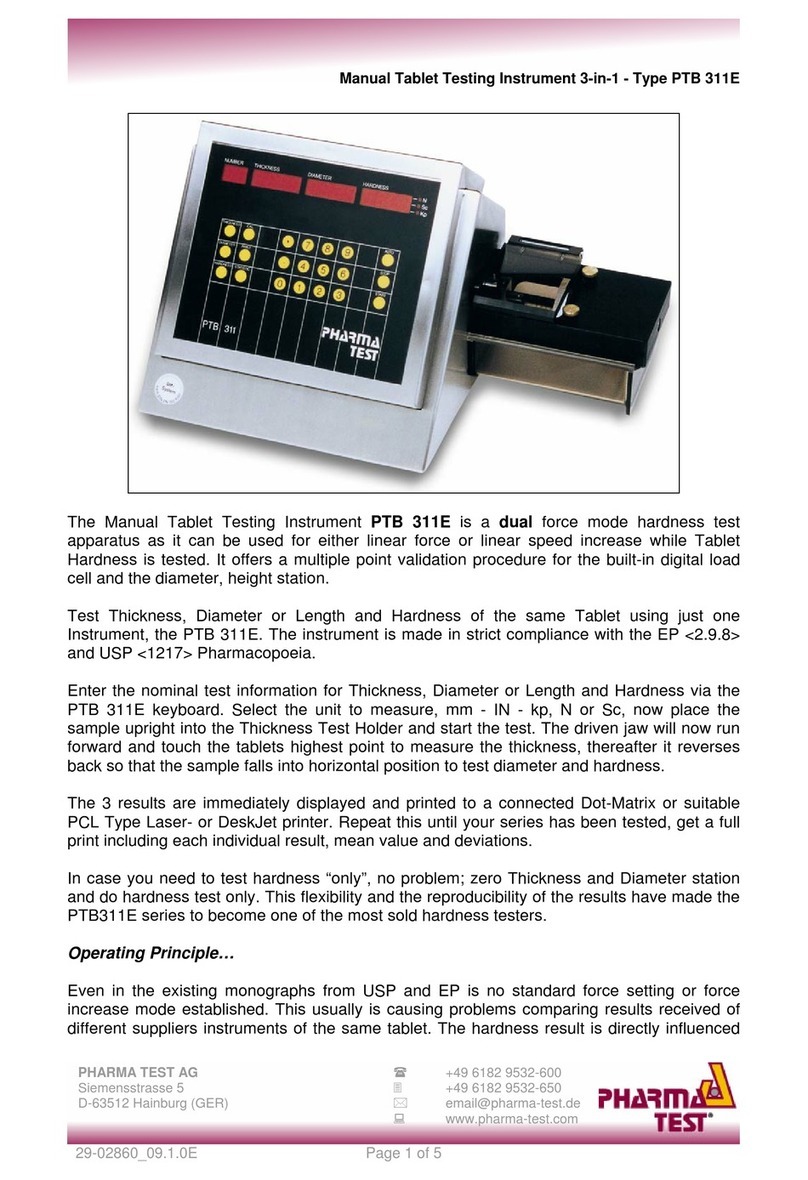
PTB 311E & PTB 511E –Manual 3-in-1 Tablet Testing Instrument
PTAG_29-02860_PTB311E_v2.2E.docx
In case you need to test hardness “only”, no problem; zero Thickness and Diameter station and
perform hardness tests only. This flexibility and the reproducibility of the results have made the
PTB311E series to become one of the most sold
hardness testers.
The flexibility and the reproducibility of the
results have made this and other models, like
the PTB 111E/111EP series to become one of
the most sold tablet hardness testing
instruments worldwide.
Operating Principle
Even in the existing USP and EP monographs
there is no standard force setting or force
increase mode established, but it is recommended to use a linear force increase rate of 20N/s.
Different force settings usually cause problems when comparing results received by different supplier's
instruments when testing the same tablet. The hardness result is directly influenced by the contact
speed and force increase rate. Faster operated test jaw means lower reproducibility and often higher
results. In order to offer the possibility to select an operating mode which will offer you similar results
as the instruments you may already use, select the force mode, linear force increase or linear speed
increase and select the same or similar rate. Also touch and detection force may be altered to suit the
sample design specification. When the sample is touched the instrument switches to the selected
mode and linear increasing rate.
Which Force Mode Should Be Selected?
For more than 18 years all Pharma Test hardness testing instruments offer the possibility to select
either linear force or linear speed increase. Linear force increase is the recommended setting as it
offers the most accurate control, as the rate of increase is directly controlled by the electronic load cell
used to read the force. Also it is quite simple to validate the correct and linear operation as a tablet
having a hardness of 100 Newton will be broken within 5 seconds if 20N/s had been set as force
increase rate.
Linear speed increase can also be used. Here the driving speed of the motor is kept linear. Actually if
the touching force is kept low there is not too much difference in results between the two systems but
it is very difficult to validate the linearity of the drive speed.
Calibration and Validation
The current USP Pharmacopeia requires the
force sensor of a tablet hardness testing
instrument to be calibrated periodically over the
complete measuring range (or the range used
for measuring samples) with a precision of 1N.
All Pharma Test tablet hardness testing
instrument can be statically calibrated over the
complete measuring range by the use of
different traceable counterweights. All
instruments support the checking of at least
three different points during calibration to prove
the linearity of the force sensor. Furthermore,
Figure 1: PT-MT3 –Magnetic Tablet

























